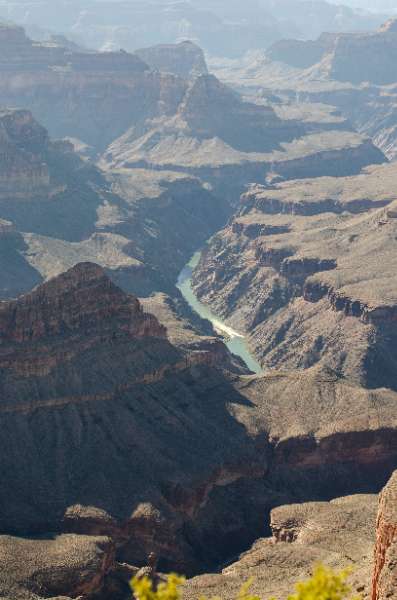The Grand Canyon is a magical and mysterious place. You can never truly comprehend the sheer size of it until you’re standing at the edge of the rim, staring at the vast canyon below. It’s both beautiful and somewhat terrifying at the same time. For decades, it has drawn people to hike its depths, float its rivers and simply just marvel at its vast expanse. There are also many secrets at Grand Canyon that you can’t explain.
Here are fun facts about the Grand Canyon that many people don’t know:
Feeling like visiting the Canyon in February? Then what are you waiting for? Plan and Book Your Trip with Christianson Tours today!
We Really Don’t Know the Grand Canyon’s Age
A 2012 study suggests that the Colorado River began the process of etching out the Grand Canyon some 70 million years ago. Originally, it was thought that it started about 6 million years ago, but the new study shows that it most likely started as a series of small canyons that developed into one giant canyon.
The Story of the Canyon’s Names
The Paiute Indian tribe calls the canyon Kaibab, which means “mountain lying down” or “mountain turned upside down.” The creamy white Kaibab Limestone forms the surface on which the park’s 5 million visitors stand while viewing the canyon.
One-armed war veteran John Wesley Powell, who charted the Colorado River's course in 1891 and 1892 in a wooden boat, was the first to consistently use the name “Grand Canyon.”
How Was the Grand Canyon Formed?
Strong geologic evidence suggests the Colorado River broke out of the west end of the Grand Canyon about five million years ago, and no sooner. But with that constraint, there is heated debate about what the canyon looked like in the millions of years before this anchor.
Did the river carve the canyon all at once? Or was there an ancient gorge waiting for the young river, ready to capture its flow? One recent study found some rocks at the western end were eroded and exposed at the surface 70 million years ago. Active debate continues, with scores of research studies ongoing in the canyon.
There are Over 1000 Caves
Much of the canyon is Redwall Limestone, a water-soluble rock. Over the years, the rock has dissolved and has resulted in caves of various sizes. Only 335 of the over 1000 caves have been recorded and there is only one cave open to the public – the Cave of the Domes on Horseshoe Mesa.
The Canyon Creates Its Own Weather

via NASA Earth Observatory
The rims of the canyon are hours apart from each other in the state of Arizona. The most commonly visited area, the Bright Angel Ranger Station on the North Rim, is the coldest and wettest. Phantom Ranch, in depths of the canyon 8 miles away, is the hottest and driest part of the canyon. The vast size of the canyon and changes in elevation can cause huge temperature variances, as well as rainstorms and snowfall. Make sure you know when is the best time to visit the Grand Canyon.
The Havasupai Indians Live in the Grand Canyon
Located at the base of the Grand Canyon is the Havasupai Indian Reservation. The Supai Village has a population of 208 and the mail is delivered by pack mule, due to it being inaccessible by road. In addition to the Havasupai Indians, four other tribes populate the area including the Hopi, Navajo, Paiute and Hualapai.
There are Only 8 Species of Fish
The Colorado River is a hard place to live for fish because it has heavy silt and frequently floods. Due to the drastic temperature changes that occur in the canyon, only eight species of fish have been able to survive in this habitat. Six of the eight species are only found in the Grand Canyon. However, only five are found in the park today. These fish species include non-native rainbow and brown trout, which can be found in the Colorado River near the Glen Canyon Dam and above the Little Colorado River. Speckled Dace can be found in the tributaries. The Humpback Chub has been on the endangered species list since 1967 and the Razorback Sucker has been on the list since 1991. Both species were once abundant, but are now very rare. Other fish found in the Colorado River include the Bluehead Sucker and the Flannelmouth Sucker. The Colorado pikeminnow, roundtail chub and bonytail are now “extirpated,” meaning they are locally extinct.
You Won’t Find Any Dino Bones, But There Are a Lot of Fossils

via YouTube
The canyon rocks are far more ancient than dinosaurs themselves, so even though it might seem like a place where dinosaur fossils would be abundant, they are not. There are, however, lots of other fossils, some that date back to 1.2 billion years ago. There are also fairly recent fossils of land mammals that are about 10,000 years old. Fossils that have been found include trilobites, crinoids, stromatolites, corals, sponges and more marine fossils. Terrestrial fossils include sloth skulls, leaves, dragonflies, and many footprints of animals that have lived in the canyon.
The Fastest Way to Visit Both Rims in One Day is by Helicopter
The North and South Rim is only about 10 miles apart as the crow flies (or maybe the raven), but due to the expanse of the canyon itself, it’s a 5-hour drive from one side to the other. The fastest way to see both rims in one day is by taking a Grand Canyon helicopter tour . Though pricey, it’s an amazing way to see the canyon and the changing terrain and scenery.
President Roosevelt First Visited the Canyon in 1903
President Roosevelt was so moved by the landscape of the Grand Canyon during his visit that he signed a bill in 1906 declaring the area as a game reserve. Two years later he made it a national monument. In 1919, it became a national park.
The Mules Come From Tennessee and Missouri
Mules are very important to the everyday functions of the Grand Canyon. The mules come from Tennessee and Missouri and are used to pack supplies and mail in and out of the canyon. Phantom Ranch and the Supai Village cannot be reached by vehicle, so the mules are used to keep these areas functioning. They also offer mule rides in and out of the canyon for those who aren’t up to the hike.
Grand Canyon Village was Settled in the 1880s

via Grand Canyon National Park Museum Collection
The first pioneers came to the rim of the Grand Canyon in the 1880s. Most were likely prospectors looking for copper, as Arizona is the largest copper producing state to date. Tourism began in 1901. A spur of the Santa Fe Railroad completed that year allowed tourists to travel from Flagstaff to Grand Canyon Village.
You Don’t Have to Look Hard for Wildlife
Wildlife abounds at the Grand Canyon. In fact, the Visitor Center often has elk just hanging around and resting in the shade of the buildings. You can often see them along the roads as well. Just be careful and follow the directions of the Park Rangers when wildlife is nearby!
So, do you feel like visiting the Canyon in January? Then what are you waiting for? Plan and Book Your Trip with Christianson Tours today!
Contact us for Unforgetable and Affordable Grand Canyon Tours:
📞(70) 2456 9200
📧[email protected]
🌐www.christiansontours.com



































